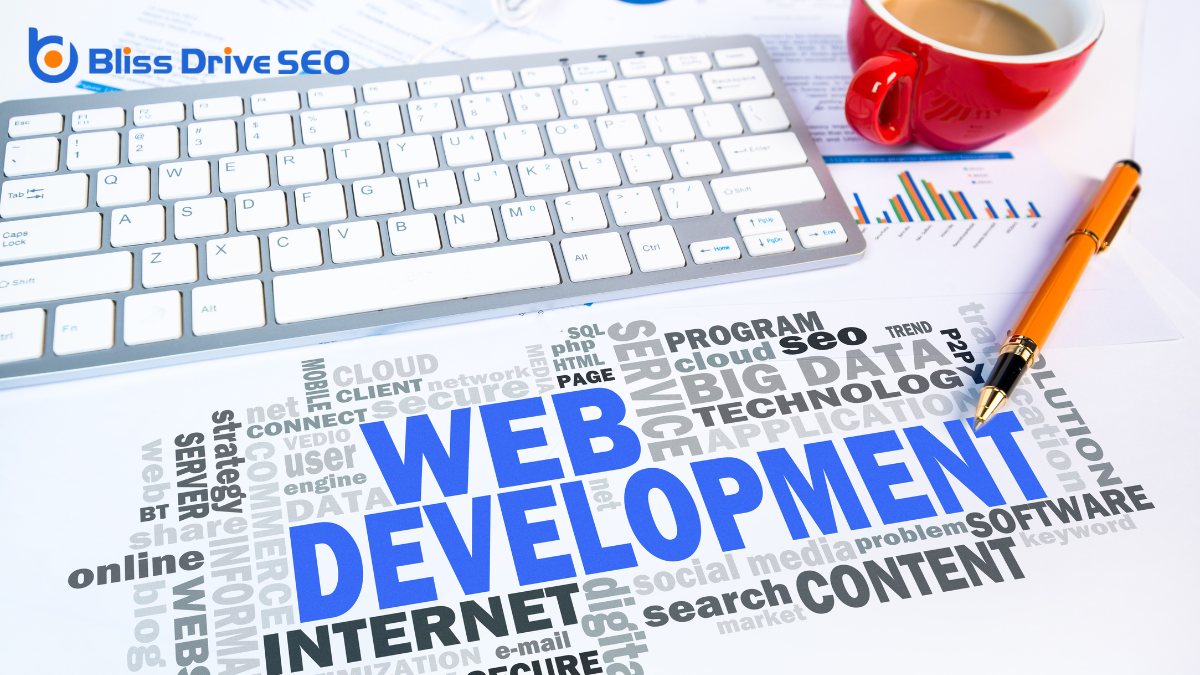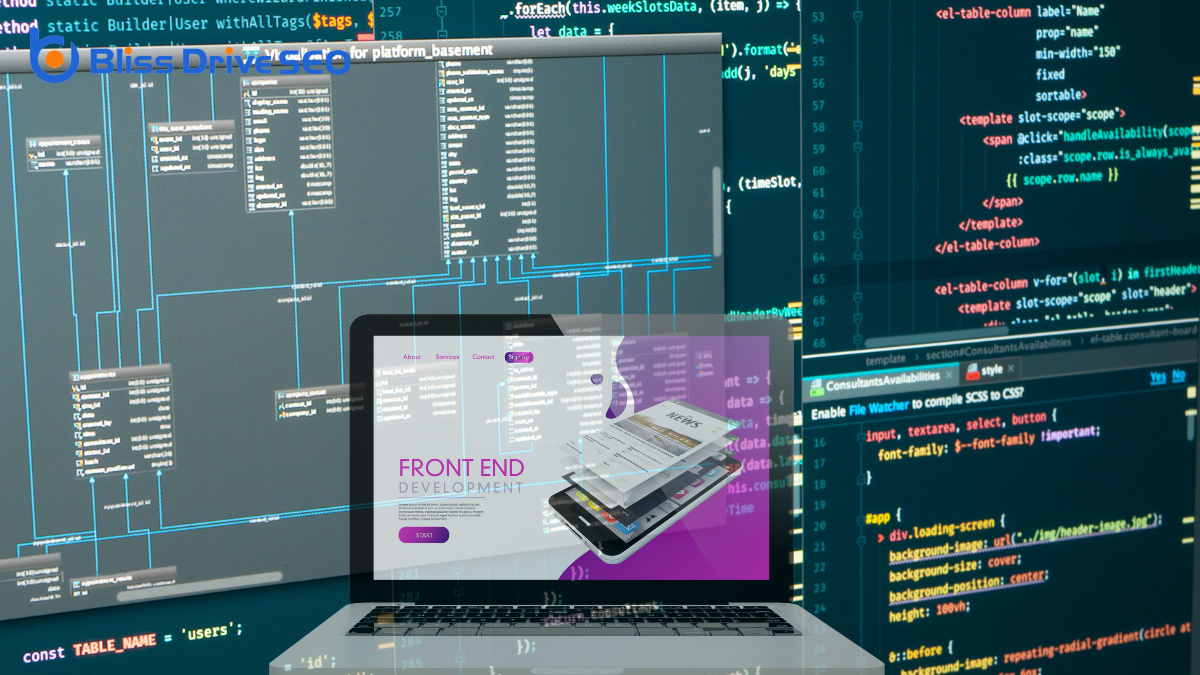Learn More About Us

You might think web development is just about writing lines of code, but it involves so much more than that. It's a multifaceted process where coding is just one piece of the puzzle. You need to reflect on user experience, design aesthetics, and even project management. The magic happens when all these elements come together to create a seamless online presence. But how do you balance these aspects and guarantee each one supports the others effectively? The answer might surprise you and change your perspective on what it truly means to develop a successful website.
When diving into web development, it's vital to grasp the entire process, not just the coding aspect. You'll find that web development is a multifaceted journey, beginning with understanding user needs and translating them into functional web solutions.
It starts with planning, where you define the purpose and goals of the website. You'll need to research the target audience and competitors to guarantee your website stands out and meets user expectations.
Next, you move on to designing the layout. This is where creativity meets functionality. You'll sketch wireframes and mockups that outline the structure and visual elements of the site. This step is important for guaranteeing a smooth user flowThe path users take through a website to complete a specific task or goal..
Then, coding comes into play. While this is a significant part, it's just one piece of the puzzle. You'll convert designs into code using HTML, CSS, and JavaScript, focusing on building a responsive and dynamic site.
Finally, testing and deployment verify everything runs smoothly across different devices and browsers. You'll perform checks for bugs and optimize the site for performance.
Understanding this entire process helps you create a thorough web experience that goes beyond just lines of code.

When you focus on user experience, you guarantee your website is more than just functional—it's engaging and accessible.
Prioritizing intuitive design helps users navigate effortlessly while considering accessibility guarantees everyone can interact with your site.
Intuitive design is fundamental to web development because it directly influences the user experience (UX)The overall experience a user has when interacting with a website or application, including usabilit.... When you visit a website, you want to find what you're looking for quickly and effortlessly.
Intuitive design helps achieve this by making navigation straightforward so users don't waste time struggling to understand how to use the site. If a website is confusing or hard to navigate, users are likely to leave and search for alternatives. This can leadA potential customer referred by an affiliate who has shown interest in the product or service but h... to lost opportunities and decreased engagementThe interactions that users have with a brand’s content on social media..
You should focus on creating a web design that anticipates user needs and behaviors. Consider how users think and interact with digital interfaces.
For instance, placing a search bar in an expected location or using familiar icons can make a significant difference. This attention to detail helps users feel at ease, encouraging them to stay longer, explore more, and ultimately return.
In modern web development, accessibility isn't just a buzzword—it's an essential component of user experience that guarantees everyone can interact with your site. When you prioritize accessibility, you're making certain that people with disabilities can navigate, understand, and use your content. This isn't just about compliance; it's about inclusion and making your site welcoming to all users.
To achieve this, various accessibility features like alt textDescriptions added to images to help search engines understand the content of images. for images, which helps visually impaired users using screen readers, should be considered. Confirm your site has a logical structure, with clear headings and labels, so everyone can find what they need without frustration.
Keyboard navigation is critical, too; some users can't use a mouse, so make certain they can access all parts of your site without one. Additionally, pay attention to color contrast and text size. These elements are essential for users with visual impairments or color blindness.
Testing your site with accessibility tools can highlight areas needing improvement. Remember, an accessible site enhances user experience for everyone, not just those with disabilities. By integrating these practices, you create a web environment that's inclusive and user-friendly, benefiting both your audience and your brand.
How do you make certain your website isn't just functional but also engaging? Enhancing user interactionAny action taken by a user on social media, such as likes, comments, shares, or retweets. is key. You want users to not only visit your site but to enjoy their experience and return. This involves more than just attractive visuals; it's about creating an intuitive and seamless journey.
Start by understanding your audience's needs and preferences. Consider these elements to enhance user experience:
These strategies help create a user-centered experience that goes beyond simple functionality. By focusing on user interaction, you transform your website into a space where visitors feel valued and understood.
When it comes to web development, the importance of web design can't be overstated. It's the first impressionWhen an ad is displayed on a user’s screen. users have of your site, and it plays a vital role in how they perceive your brand. A well-designed website isn't just about aesthetics; it's about creating an intuitive and engaging experience.
If a website is visually appealing and easy to navigate, users are more likely to stay longer and explore further. This, in turn, can increase engagement and conversionThe completion of a desired action by a referred user, such as making a purchase or filling out a fo... rates.
Web design also directly impacts usability. A robust design guarantees that users can find what they're looking for quickly and effortlessly. This includes thoughtful layout, color schemes, typography, and responsive design, which adapts to different devices and screen sizes.
A design that's visually coherent and functional guarantees your audience doesn't feel frustrated or overwhelmed.
Moreover, web design is essential for building trust and credibility. If your website looks outdated or unprofessional, visitors might question your legitimacy. Investing in good design shows you care about user experience and value your business's digital presence.
You might think that creating a website is all about design and coding, but content management is just as vital. As you build a site, organizing and maintaining the content is essential for a seamless user experience. Without proper content management, even the most visually appealing website can fall flat.
It's about making sure your information is accessible, up-to-date, and engaging. A robust content management system (CMS)Software used to create, manage, and publish digital content. can help you handle this efficiently. With a CMS, you can easily update content without needing to delve into the code every time. This not only saves time but also keeps your site dynamic and relevant.
Here are a few essentials to take into account when managing your content:

In web development, understanding the interplay between frontend and backend dynamics is vital. Imagine the front end as the tip of the iceberg—it's what users interact with directly. This includes everything from buttons, forms, and layout to the overall aesthetic of a website. It's where HTML, CSS, and JavaScript come into play, creating a seamless user experience.
Now, think of the backend as the submerged part of the iceberg, unseen but essential. It powers the frontend by handling data, security, and functionality. This involves server-side languages like PythonA high-level programming language widely used for data analysis and machine learning., Ruby, or PHP and databases that store your information. The backend guarantees the website functions smoothly, managing requests and responses between the server and the user.
For a website to function effectively, both sides must communicate well. When you click a button on a site, the frontend sends a request to the backend, which processes it and returns the necessary data.
This dynamic relationship is like a dance; each side complements the other. By mastering these dynamics, you guarantee a cohesive, efficient, and engaging web experience for users, making your site not just functional but delightful to use.
When you're building a website, integrating SEO techniques is vital for improving your site's visibility.
By strategically using keywordsWords or phrases that users type into search engines to find information., you help search engines understand your content, making it easier for potential visitors to find you.
Effective SEO strategies aren't just an add-on; they're an essential part of web development that can greatly impact your site's success.
For any web development project, integrating SEO strategies is crucial to achieving visibility and reach in the digital world. Without the right SEO techniques, your website might struggle to attract the audience it deserves.
You need to focus on optimizing your site not just for search engines but for real users who are looking for valuable content. SEO is more than just a technical requirement; it's a bridge between your website and its potential visitors.
To effectively integrate SEO into your web development, consider these essential strategies:
Keywords act as the backbone of SEO, playing a pivotal role in enhancing your website's visibility. They're the terms your audience types into search engines when looking for information, products, or services.
By integrating relevant keywords into your content, you increase the chances of your site appearing in search results, driving more traffic your way. It's not just about stuffing your pages with random words; instead, it's about strategically placing them where they make the most impact.
To start, identify keywords that align with your content and audience. Use tools like Google Keyword Planner or SEMrush to find terms with high search volumes but low competition.
Once you've got your list, incorporate these keywords naturally into your titles, headings, and body text. Don't forget about meta descriptions and image alt tags—these are valuable places for keywords, too.
Effective project management is the backbone of successful web development projects. It's not just about coding; it's about guaranteeing each part of the project aligns and progresses smoothly.
As a project manager, you orchestrate the team's efforts, manage deadlines, and handle resources efficiently. You must communicate clearly with stakeholders, keeping everyone on the same page and guaranteeing that expectations are met.
Your role involves balancing technical aspects with the business goals, guaranteeing the project delivers value.
To excel in web development project management, focus on these key areas:

As project management remains a cornerstone of web development, it's equally important to stay ahead of future trends shaping the industry. By doing so, you keep your skills relevant and your projects cutting-edge.
One major trend you should watch is the rise of Progressive Web Apps (PWAs). They blend the best of web and mobile apps, offering offline functionalities and faster load times, which can enhance user experience and engagement considerably.
Artificial Intelligence (AI) and Machine LearningA subset of artificial intelligence where computers use data to learn and make decisions. (ML) are also making waves. By integrating AI, you can personalize user experiences, automate content creation, and even optimize your site for search engines more effectively. These technologies are becoming more accessible, so embracing them can propel your projects ahead.
Another area gaining traction is voice search optimizationAdjusting SEO strategies to cater to voice search queries.. As more people use smart speakers and voice assistants, optimizing for voice search guarantees your content is easily discoverable.
You might also explore WebAssembly, which allows you to run code written in multiple languages on the web, enhancing performance.
Staying informed about these trends guarantees you're not just writing code but crafting innovative, future-proof web solutions that meet evolving user needs.
In web development, you're not just coding. You're diving into a multifaceted process that demands understanding user needs, crafting stellar designs, and managing content effectively. You blend frontend and backend skills while integrating SEO techniques to boost visibility. It's all about collaboration and project management, ensuring the final product is engaging and meets business objectives. As you embrace future trends, remember that each element plays a vital role in creating successful, user-friendly websites.
